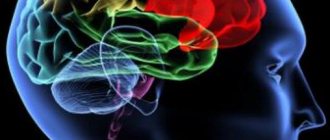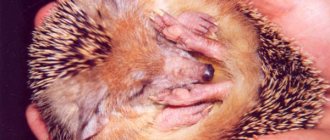The ability to be creative and create something new has always been highly valued in society. And it is not surprising, since people who have this gift are unique generators of the development of human civilization. But creativity also has subjective value. A person endowed with them creates the most comfortable conditions for existence, transforms the world, adapting it to his needs and interests.
It would seem that everything is simple: you need to actively develop these abilities. However, humanity has been struggling for hundreds of years with the question of what is the secret of creativity, what makes a person a creator.
Abilities and their role in activities
Before we talk about creativity, let's first understand what abilities are in general.
In psychology, ability is understood as a complex of physical and mental qualities of a person that provide him with the opportunity to engage in a certain type of activity:
- There are general abilities needed in different areas, such as intelligence.
- And there are special ones associated only with one specific activity. For example, a musician, singer and composer need an ear for music, and a high sensitivity to color discrimination is needed by a painter.
The basis of abilities are innate, natural inclinations, but abilities are manifested and developed in activity. To learn to draw well, you need to master painting, drawing, composition, etc., to achieve success in sports, you need to engage in this sport. Otherwise, in no way, the inclinations themselves will not become abilities, much less turn into talent.
But how is creativity related to all this, since this is not a special type of activity, but rather its level, and a creative gift can manifest itself in any area of life?
Structure of creative abilities
The totality of creative abilities and their active manifestation in the life of an individual is called creativity. It has a complex structure that includes both general and special abilities.
General level of creativity
Like any other abilities, creative ones are associated with psychophysiological inclinations, that is, the characteristics of the human nervous system: the activity of the right hemisphere of the brain, the high speed of nervous processes, the stability and strength of the processes of excitation and inhibition.
But they are not limited to innate qualities and are not a special gift received by us from nature or sent from above. The basis of creativity is the development and active, persistent activity of a person.
The main area in which creativity is manifested is the intellectual sphere. A creative person is characterized by special thinking that differs from the standard one, including logical thinking. Various researchers call this thinking unconventional or lateral (E. de Bono), divergent (J. Guilford), radiant (T. Buzan), critical (D. Halpern) or simply creative.
J. Guilford, a famous psychologist and creativity researcher, was one of the first to describe the unique type of mental activity inherent in creative people. He called it divergent thinking, that is, directed in different directions, and it differs from convergent (unidirectional), which includes both deduction and induction. The main feature of divergent thinking is that it is focused not on searching for one single correct solution, but on identifying multiple ways to solve a problem. The same feature is noted by E. de Bono, T. Buzan, and Ya. A. Ponomarev.
Creative thinking - what is it?
Creative thinking has been studied throughout the 20th century, and a whole range of characteristics of the mental activity of people who are characterized by this type of thinking has been identified.
- Flexibility of thinking, that is, not only the ability to quickly switch from one problem to another, but also the ability to abandon ineffective solutions and look for new ways and approaches.
- Shifting the focus of perception is a person’s ability to look at an object, situation or problem from an unexpected angle, from a different angle. This makes it possible to consider some new properties, features, details that are invisible with a “direct” look.
- Reliance on the image. Unlike standard logical and algorithmic thinking, creative thinking is figurative in nature. A new original idea, plan, project is born as a bright three-dimensional image, only at the development stage acquiring words, formulas and diagrams. It is not for nothing that the center of creative abilities is located in the right hemisphere of the brain, which is responsible for working with images.
- Associativity. The ability to quickly establish connections and associations between the task at hand and information stored in memory is an important feature of the mental activity of creative people. The creative brain resembles a powerful computer, all of whose systems constantly exchange impulses carrying information.
Although creative thinking is often opposed to logical thinking, they do not exclude each other, but complement each other. It is impossible to do without logical thinking at the stage of checking the solution found, implementing the plan, finalizing the project, etc. If rational logical thinking is undeveloped, then the plan, even the most ingenious one, most often remains at the level of an idea.
Creativity and Intelligence
When talking about a person’s ability to think, most often they mean the level of intelligence. If the connection between intelligence and the development of logical thinking is the most direct, then the same cannot be said about creative potential.
According to the standard intelligence quotient (IQ) test, people who score less than 100 (below average) are not creative, but high intelligence does not guarantee creativity. The most creatively gifted people are in the range from 110 to 130 points. Among individuals with an IQ above 130, creatives are found, but not often. Excessive rationalism of intellectuals interferes with the manifestation of creativity. Therefore, along with the IQ, the creativity quotient (Cr) was also introduced, and, accordingly, tests were developed to determine it.
Special abilities in creativity
The presence of general abilities in creative activity ensures the novelty and originality of its product, but without special abilities it is impossible to achieve mastery. It is not enough to come up with an original plot for a book; you also need to be able to present it literary, build a composition, and create realistic images of the characters. The artist must embody the image born in the imagination in the material, which is impossible without mastering the technique and skills of visual activity, and the development of a scientific and technical invention presupposes mastery of the basics of the exact sciences, knowledge in the field of mechanics, physics, chemistry, etc.
Creativity has not only a spiritual, mental, but also a practical side. Therefore, creativity also includes applied, special abilities that develop first at the reproductive (reproducing) level. A person, under the guidance of a teacher or independently, masters specific methods and techniques of activity that were developed before him. For example, he learns notation, masters playing a musical instrument or art technique, studies mathematics, the rules of algorithmic thinking, etc. And only after mastering the basics of a specific activity, developing the necessary skills and gaining knowledge, can a person move to the level of creativity, that is create your own original product.
Special abilities are needed for a creative person to become a master, and his activity (any activity at that) to become art. The absence or underdevelopment of special abilities often leads to the fact that the need for creativity is not satisfied, and creative potential, even quite high, remains unrealized.
Scientific research rejects any division between the creative and corporate working classes
What can we say if in the modern corporate environment there is an artificial division into “creative” and “corporate” types who relate to each other like Gryffindor and Slytherin students. However, almost all studies of creativity that have been conducted over the past 50 years reject this division: the creative muscle has nothing to do with genetics, intelligence, or personality traits.
For example, during an experiment at the Institute for Diagnostics and Personality Research (IPAR), scientists invited several dozen successful representatives of various creative professions to the conference. Over the course of several days, they took many tests, which did not really clarify where to look for creative inclinations. The only common features of the subjects looked like this: balanced personal characteristics, above average intelligence, openness to new experiences and a tendency to choose difficult options. As you can see, nothing special.
How to determine if you have creative abilities
All people have a predisposition to creativity, however, creative potential, as well as the level of creativity, is different for everyone. Moreover, placed in certain strict conditions (for example, while performing a task), a person can use creative methods, but then not use them either in professional or everyday life and not feel any need for creativity. Such a person can hardly be called a creative person.
In order to determine the presence and degree of development of creative abilities, there are many test methods developed by psychologists. However, in order to adequately evaluate the result obtained using these methods, you need to have knowledge in the field of psychology. But there are a number of criteria by which everyone can assess their own level of creativity and decide how much they need to develop their creative abilities.
Levels of intellectual and creative activity
Creativity presupposes a high level of intellectual and creative activity, that is, not only the ability for mental activity, but also the need for it, independent use of creative thinking techniques without pressure from others.
There are 3 levels of such activity:
- Stimulating and productive. A person at this level conscientiously solves the tasks assigned to him and tries to achieve good results. But he does this under the influence of external stimuli (an order, a task from above, the need to earn money, etc.). He lacks cognitive interest, passion for work and internal incentives. In his activities, he uses ready-made solutions and methods. This level does not exclude some random original solutions and findings, but having used the method he found once, a person subsequently does not go beyond its scope.
- Heuristic level. It assumes a person’s ability to make discoveries empirically, through experience, often reducing to trial and error. In his activities, the individual relies on a reliable, proven method, but tries to refine it and improve it. He values this improved method as a personal achievement and a source of pride. Any found interesting, original idea, someone else’s idea becomes an impetus, a stimulus for mental activity. The result of such activity can be very interesting and useful inventions. After all, man invented the airplane by watching birds.
- The creative level involves not only active intellectual activity and problem solving at a theoretical level. Its main difference is the ability and need to identify and formulate problems. People at this level are able to notice details, see internal contradictions and pose questions. Moreover, they love to do this, possessing a kind of “research itch” when a new interesting problem arises and forces them to postpone activities that have already begun.
Despite the fact that the creative level is considered the highest, the most productive and valuable for society is the heuristic one. Moreover, the most effective is the work of a team in which there are people of all three types: the creative gives birth to ideas, poses problems, the heuristic refines them, adapts them to reality, and the practitioner brings them to life.
Parameters of creative talent
J. Guilford, who created the theory of divergent thinking, identified several indicators of the level of creative talent and productivity.
- Ability to pose problems.
- Productivity of thinking, which is expressed in the birth of a large number of ideas.
- Semantic flexibility of thinking is the rapid switching of mental activity from one problem to another and the inclusion of knowledge from different areas into the thought process.
- Originality of thinking is the ability to find non-standard solutions, generate original images and ideas, and see the unusual in the ordinary.
- The ability to change the purpose of an object, improve it by adding details.
To the characteristics identified by J. Guilford, another important indicator was later added: ease and speed of thinking. The speed of finding a solution is no less, and sometimes more important, than its originality.
Creativity or madness
For a long time it was believed that creativity was just one manifestation of insanity. Experience has provided much evidence of this connection. Writer E. Hemingway suffered from severe depression throughout his life. One of the most famous film actresses of the twentieth century suffered from an addiction to alcohol, and at the age of 36 she committed suicide - it was Marilyn Monroe. The greatest German philosopher, Friedrich Nietzsche, also suffered from constant bouts of melancholy. Jean-Paul Sartre, the founder of existentialism in philosophy, used alcohol, sleeping pills and stimulants throughout his life.
About two centuries ago, no one doubted that creativity had its source in either schizophrenia or melancholy. Many people imagine artists as people “not of this world”; The image of the “mad scientist” is also quite firmly rooted in everyday consciousness. These stereotypes became so firmly established in the mind that creativity began to be perceived as a process that went beyond compatibility with ordinary life. They also became the reason that new problems in the development of a creative personality have arisen - many are now convinced that creativity is the lot of the elite. It is inaccessible to mere mortals. However, this is not quite true.
Psychologists often express the opinion that outstanding individuals are not those who possess a certain set of extraordinary qualities; rather, they are those who know how to be at the right time and in the right place. However, researchers have identified several qualities that still distinguish gifted and creative people:
- Independence of judgment; having your own point of view on any events;
- A creative person is one who always strives to go beyond the ordinary, to find a more original solution to a problem;
- Creative people are psychologically resistant to situations of uncertainty;
- In their activities they choose a constructive approach;
- Their Ego is strong enough to function independently of society; War with the public is often their everyday condition. Creative people are quite autonomous and resistant to social pressure;
- Openness to new experiences and knowledge;
- The ability to perceive beauty in the broad sense of the word.
How to develop creativity
It is better to start developing creative abilities in childhood, when the need for creativity is very strong. Remember with what delight children perceive everything new, how they enjoy new toys, activities, walks in unfamiliar places. Children are open to the world and, like a sponge, absorb knowledge. Their psyche is very flexible and plastic; they do not yet have stereotypes or standards on the basis of which the thinking of adults is built. And the main tools of children’s mental activity are images. That is, there are all the prerequisites and opportunities for the effective development of creative abilities. This process is especially successful if adults encourage children to express their creativity and organize joint activities and games themselves.
As for adults, in this case it is also possible to increase the level of creativity, make professional activity more creative, or find an opportunity to realize your need for creativity in some kind of art, hobby or hobby.
The main thing for an adult is precisely the presence of a need, since people often complain that God deprived them of talent, but do nothing to find an area in which their personality could be realized. But if you realize the need to develop your potential, then there is such an opportunity.
Any abilities develop through activity and require mastery of skills, that is, training. Considering that creative abilities are primarily a set of qualities and properties of thinking, it is the thinking abilities that need to be trained.
Entire trainings have been developed specifically for the development of creativity, thinking and imagination, and exercises from them can be performed independently, especially since they often resemble an exciting game.
Exercise “Chain of Associations”
Associative thinking plays an important role in creativity, but it is most often involuntary, spontaneous, so you need to learn to manage it. Here is one of the exercises to develop the skills of consciously working with associations.
- Take a piece of paper and a pen.
- Choose a word. The choice should be arbitrary; you can simply open the dictionary on the first page you come across.
- As soon as you read the word, immediately “catch” the first association for it in your head and write it down.
- Next, write down the next association in the column, but for the written word, and so on.
Make sure that the associations are consistent, for each new word, and not for the previous or the very first. When there are 15-20 of them in a column, stop and carefully read what you got. Pay attention to what sphere, area of reality these associations belong to. Is this one area or several? For example, the word “hat” may have associations: head - hair - hairstyle - comb - beauty, etc. In this case, all associations are in the same semantic field, you could not get out of the narrow circle, jump over stereotypical thinking.
And here is another example: hat - head - mayor - thought - thinking - interest - reading - lessons, etc. There is an associative connection, but thinking is constantly changing its direction, entering new areas and areas. Undoubtedly, the second case indicates a more creative approach.
When performing this exercise, achieve similar transitions, but do not think about the birth of associations for too long, because the process should be involuntary. The game with associations can be played in a group, competing to see who will have more associations and more original transitions over a certain period of time.
Better Creative Thinking Skills
Next, let's look at what skills are needed to develop creative abilities?
#1. Analysis
Before you can think about anything creatively, you must be able to understand it. This requires the ability to carefully examine things in order to comprehend their true meaning. If you are looking at a text, a set of data, a lesson plan, or an equation, you must first analyze it.
#2: Keep an open mind
Creativity and developing creativity involves thinking about things differently within the context in question.
You must put aside any assumptions or preconceptions you may have and look at things in a completely new way. By approaching a problem with an open mind, you give yourself the opportunity to think creatively.
#3. Problem solving
Nobody wants to associate with creative people just because they impress. The world needs people who can solve problems.
Therefore, it is important to emphasize not only your ability to think creatively, but also to use your creativity to solve important problems.
#4. Stay organized
This may seem counterintuitive: aren't creative people known for being disorganized? In fact, being organized is an important part of creativity.
Although you may be a bit of a cluttered thinker, when you come up with a new idea, you need to articulate it in a way that other people can understand and implement your vision. Being able to create an action plan with clear goals and timelines is vital.
#5. Communications
People will only appreciate your creative idea or solution if you can effectively communicate it to them. Therefore, you need to have strong written and oral communication skills.
You also need to be able to think about a situation fully before thinking about it creatively. Therefore, you also need to be a good listener. By asking the right questions and understanding the problem, you can find a unique solution.








